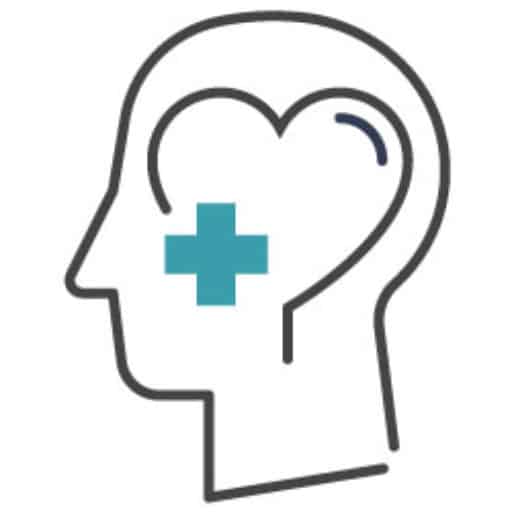Intrusive thoughts and ideas are a reality of life, but when they become a distraction or even an obstacle to achieving optimal health and well-being, therapeutic tools can help turn down their volume in your mind. Acceptance and commitment therapy, or ACT, is one of those valuable tools. As more therapists and mental health professionals embrace this revolutionary approach to moving beyond trauma, it may be time to incorporate it into your life as well. But what does this unique framing accomplish, and what’s the best way to make it work for you? Here’s everything you need to know about ACT.
What Is ACT?
Usually referred to by its acronym in therapy, those unfamiliar with this therapeutic tool may wonder, “What does ACT stand for?” While it literally means acceptance and commitment therapy, in practice, it represents the idea of acknowledging negative thoughts rather than immediately suppressing or burying them. Over time, the goal is to eliminate the impact of these intrusive thoughts and feelings and instead consciously recognize them as warning signs that indicate a need to adjust thinking.
ACT exists as a tool and a mode of thinking, not necessarily a cure-all or a stand-alone treatment. It’s often used in conjunction with other therapies and medication to provide broad-spectrum support in multiple stressful or mentally difficult situations. A 2025 report cited in the National Library of Medicine notes that randomized trials utilizing ACT have “efficacy in treating various psychological issues and improving psychological well-being.”
Core Principles
Using ACT effectively turns some emotional instincts on their head, encouraging conscious consideration and in-the-moment addressing to keep negative emotions from piling up. The Association for Contextual Behavioral Science explains the six core principles of ACT as follows:
Acceptance
The first step of acceptance encourages users to acknowledge their negative thoughts or feelings instead of trying to diminish or eliminate them. This may involve stating, either mentally or verbally, “I feel like a failure because I didn’t do this task,” rather than trying to give yourself a mental pep talk, downsizing the importance of the task, making excuses or coming up with a defensive list of things you’ve accomplished.
Cognitive Defusion
The next step is cognitive defusion, which is much like cutting the lit fuse off a stick of dynamite. This can be achieved in a variety of ways, including dispassionately examining why that feeling was triggered by that task or reframing the thought without denying it. That may involve thinking, “I notice I’m placing too much ethical emphasis on completing this task in a certain time frame. I appreciate my brain reminding me that I’m not the sum of my tasks.”
Remaining Present
When intrusive or persistent thoughts become an issue, catastrophizing or focusing on potential future problems can leave you feeling mentally stuck in place. Encouraging a sense of remaining present helps you focus on the problem and solutions at hand rather than worrying over what may be.
Using Yourself as Context
Another common obstacle to solving unwanted thought patterns is imagining forces outside yourself as being the problem. Sticking to mental and verbal “I” statements helps defuse this tendency and, once again, keep focus on obtainable solutions and observations. Rather than saying “Everything’s working against me,” taking the simple conversational step back and saying “I feel like I’m having a lot of trouble with this task today” acknowledges struggles without dismissing them as being beyond the individual’s control.
Values
This step prompts consideration of undue cultural, familial or even religious pressures on negative thoughts. It might entail considering, “Am I actually upset at not finishing this task or upset that someone in my life will judge me for it? I need to focus on my own thoughts and judgment, not theirs.”
Action
Action completes the ACT journey. This step encourages concrete planning for the future, particularly what actions the individual will or won’t take if this negative thought or situation occurs again. This might be expressed as “I won’t use this harsh language about myself if this happens again” or “I’ll start this task 10 minutes earlier next time to avoid this triggering situation.”
How ACT Differs From CBT and Other Modalities
While cognitive behavioral therapy, or CBT, focuses on changing or eliminating negative thought patterns directly, ACT instead “meets them where they stand” by addressing and reflecting in the moment. While the two therapy modes may seem in opposition, in reality, parts of one can complement the other, particularly as part of targeted, ongoing therapy through a mental health professional or facility. As with all therapy, how well one or both work depends largely on a person’s needs, trauma and success rate with tools and modalities.
Conditions ACT Is Commonly Used to Treat
Acceptance and commitment therapy is most effective for mental health disorders that are disruptive and often entwined with intrusive thoughts and impulses. Complex post-traumatic stress disorder, obsessive-compulsive disorder and chronic pain conditions can potentially benefit from the incorporation of ACT within a larger mental health treatment and support plan.
Alongside these disorders, those struggling with substance abuse — more than 45 million adults as of 2024 — can also benefit from ACT. Because these disorders often manifest as intrusive thoughts and deal with impulse control issues, in-the-moment focusing tools, such as ACT, can be invaluable for preventing self-harm through risky decisions and behavior. While ACT must generally be combined with other therapies for the best chance of success, it makes an excellent starting point.
Practicing Mindfulness and Psychological Flexibility
One of the key differences between ACT and other therapy modalities is psychological flexibility, or the idea that therapy tools must be changeable to be matched to specific situations. In other words, in some situations, rigid therapy protocols may not be appropriate, or the individual using them may lack the mental space/capacity to think or act a specific way. Mindfulness, the ability to concentrate on the present moment rather than the moment as a memory of a past event or future concern, is another important component of ACT.
Finding an ACT-Informed Therapist
Interested in exploring acceptance and commitment therapy in your own journey of mental health and well-being? Contact our mental health professionals at Restore to schedule an assessment or treatment. We’re here to help you 24 hours a day, 7 days a week.



